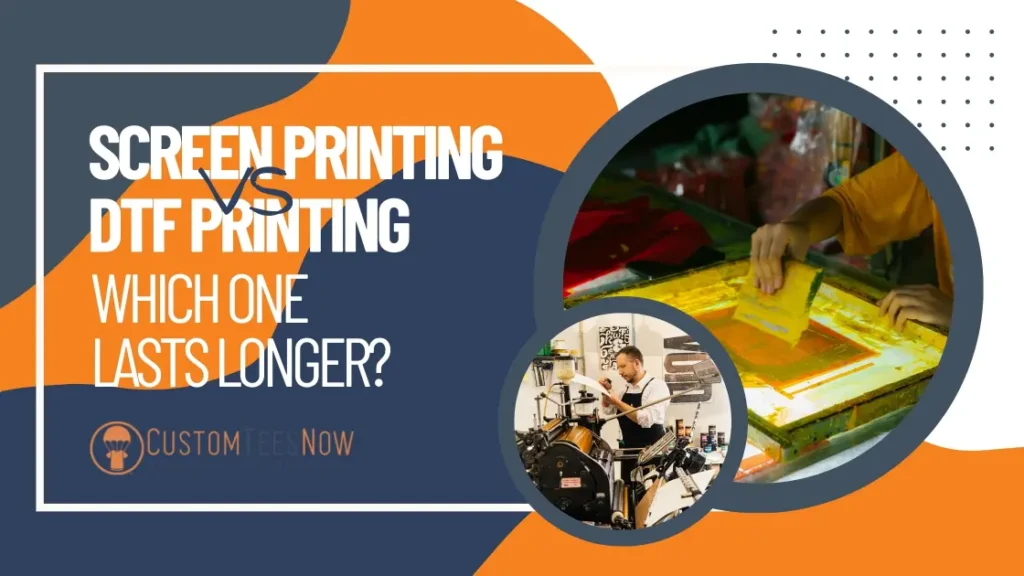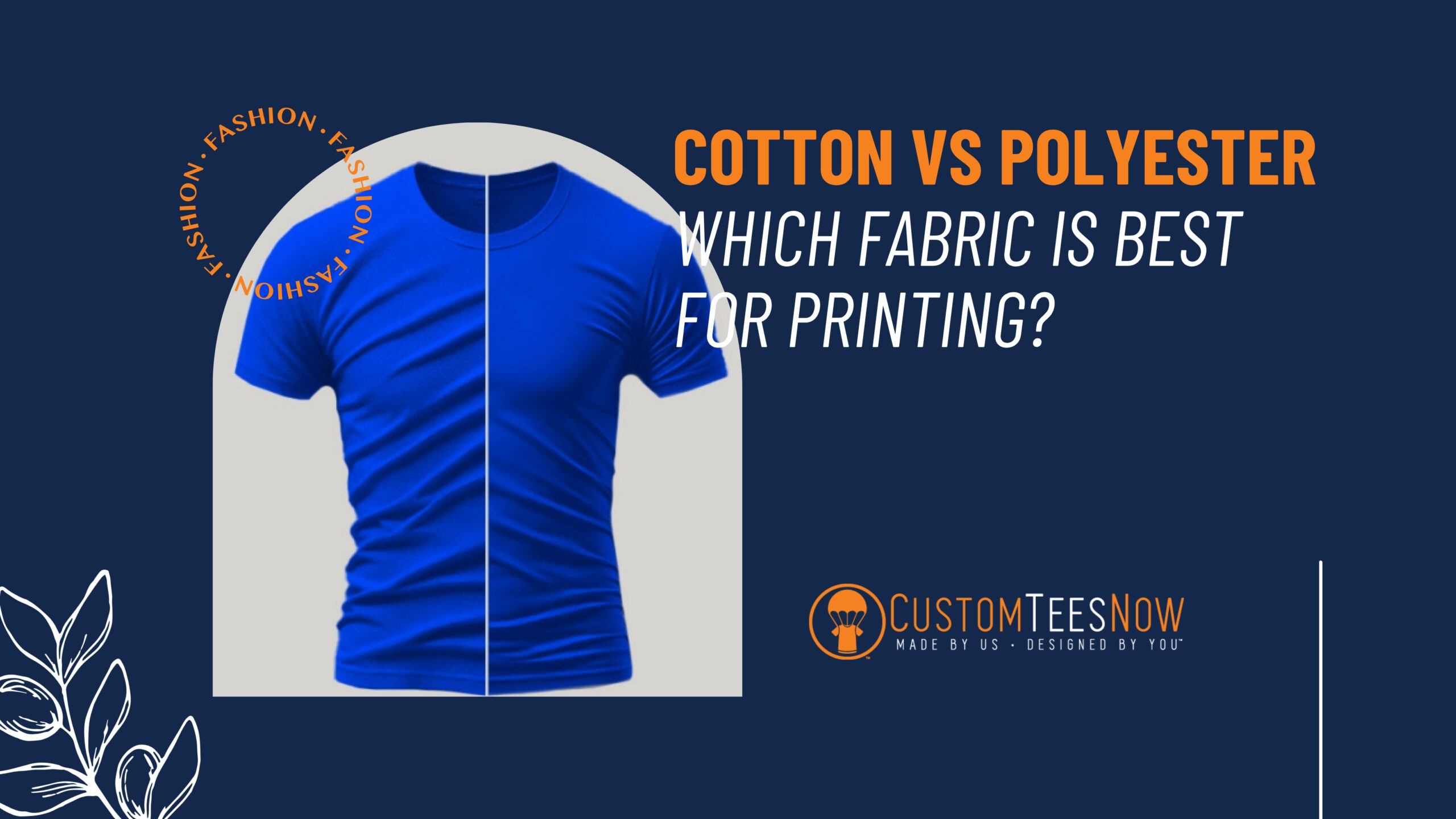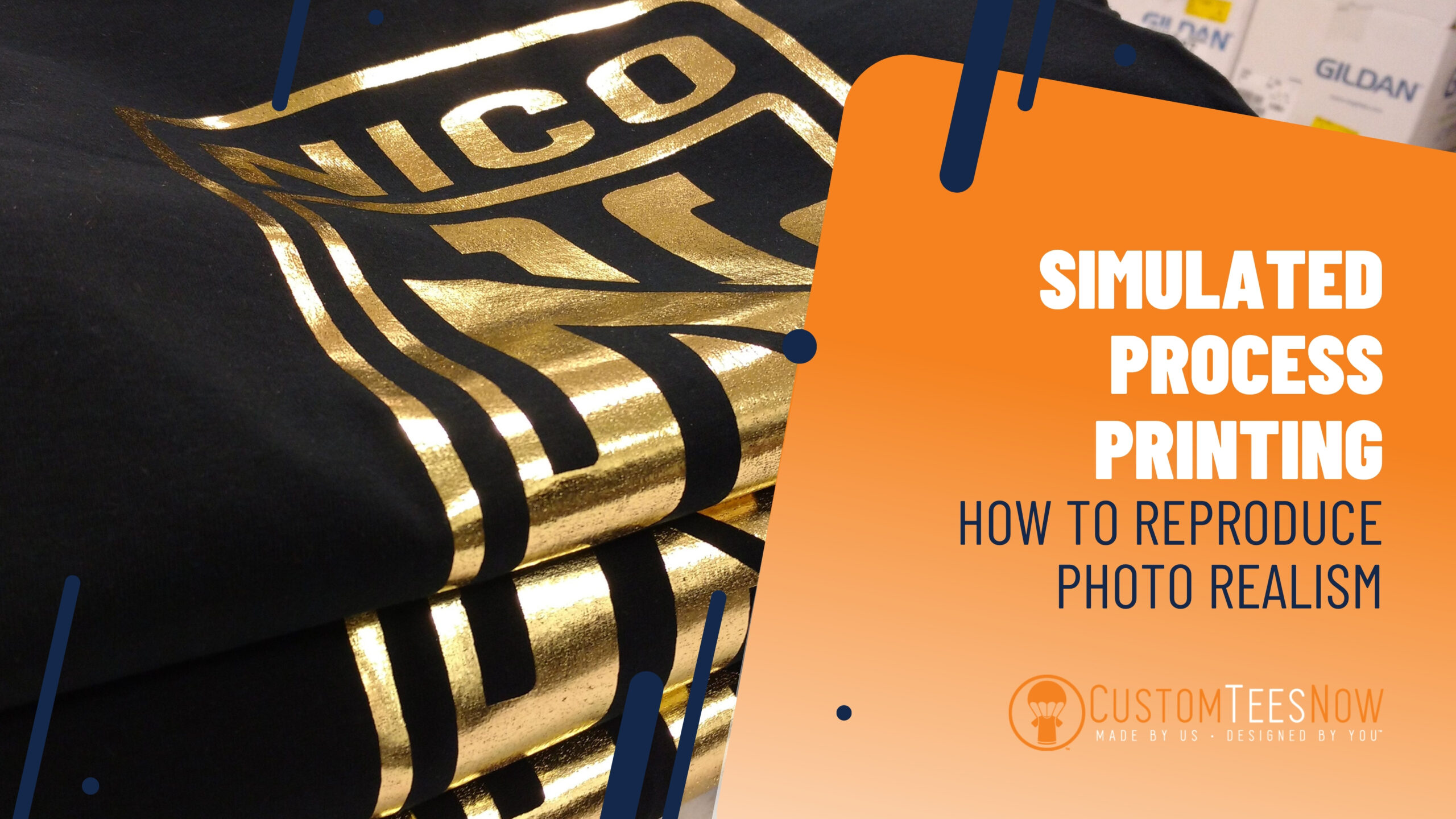
- July 10, 2025
Screen Printing vs DTF: Which Lasts Longer? Expert Guide

When it comes to custom apparel, durability is just as important as design. Screen printing and DTF (Direct-to-Film) printing are two of the most popular methods for putting vibrant, eye-catching graphics onto T-shirts, hoodies, uniforms, and more. But when you’re investing time and money into branded clothing, you naturally want to know: Which one actually lasts longer?
The Basics of Print Durability
Before we dive deep, let’s get clear on what durability really means for printed clothing. In simple terms, a durable print keeps its color, shape, and crisp edges even after many washes, tumbles in the dryer, and everyday wear and tear. Cracking, fading, and peeling are the top signs that a print method isn’t holding up well.
Choosing the right print method isn’t just about cost or how the design looks on day one — it’s about how that design looks after 50+ washes, countless wears, and all the rough handling that clothing goes through in real life.
Why Compare Screen Printing and DTF?
Both screen printing and DTF have exploded in popularity for different reasons. Screen printing has been trusted for decades, especially for bulk orders and simple designs on cotton fabrics. Its bold colors and sturdy ink make it the go-to choice for band merch, sports uniforms, and company T-shirts.
Meanwhile, DTF printing is newer but gaining ground fast. It uses a special film and powder adhesive, then heat-presses the design onto fabric. DTF is loved for its ability to handle full-color, high-detail artwork, and for sticking well to tricky fabrics like polyester blends and performance gear.
So, which method wins the durability battle? The short answer is: It depends. In general, well-done screen printing tends to outlast DTF on cotton-heavy fabrics, while DTF can hold up just as well — or better — on synthetics when applied and cared for properly.
What You’ll Learn in This Guide
In this in-depth guide, you’ll get:
- A clear breakdown of how each method works
- The real-life durability factors that matter most
- A side-by-side look at how both methods handle washing, cracking, and peeling
- Practical tips to help you choose the best option for your specific fabric and use case
- Expert insights and lab-tested results where available
- A handy pros and cons summary table
- A final verdict with a decision matrix to match your needs
Whether you run a print shop, manage a clothing brand, or just want to make the smartest choice for your next custom order, you’ll find the answers here.
Understanding the Basics
To truly compare screen printing and DTF, it helps to know what’s happening behind the scenes. Both methods transfer ink or film onto fabric — but how they do it is very different.
What is Screen Printing?
Screen printing, sometimes called silk screening, is one of the oldest and most reliable ways to decorate fabric. The basic idea is simple: push ink through a mesh screen that has your design burned into it.
Here’s how it works step by step:
- A mesh screen is coated with a light-sensitive emulsion.
- Your design is transferred onto the screen, blocking certain areas so ink can’t pass through.
- Using a squeegee, a printer pulls ink across the screen, pressing it through the open areas onto the fabric below.
- The shirt goes through a dryer or heat tunnel to cure the ink permanently.
Common inks for screen printing include:
- Plastisol ink: Very durable and vivid; most common for T-shirts.
- Water-based ink: Softer feel, eco-friendly, but may not be as opaque.
- Discharge ink: Removes dye from dark shirts to print lighter colors.
Best fabrics for screen printing:
- 100% cotton is king here.
- Cotton blends and heavier fabrics like hoodies also work well.
- Light synthetics can be tricky, because the ink may not bond as strongly without extra additives.
Why do people love screen printing? It’s cost-effective for bulk orders, the colors pop, and a well-cured print can last for years with minimal fading or cracking.
What is DTF (Direct-to-Film) Printing?
DTF printing is the new kid on the block. Instead of pushing ink through a screen, DTF uses a digital printer to print your design directly onto a clear PET film. Here’s how it works:
- Your design is printed in reverse onto the film using special DTF inks.
- The printed film goes through a powder station where a fine adhesive powder sticks to the wet ink.
- The powder-coated film is then heat-cured to activate the adhesive.
- The film is placed ink-side down on the fabric and pressed with a heat press.
- After cooling, the film is peeled away, leaving the design bonded to the garment.
DTF is popular because:
- It works on almost any fabric — cotton, polyester, blends, nylon, spandex.
- It handles complex, full-color images really well.
- There’s no need for screens or messy setup, so it’s perfect for small runs or one-offs.
Ideal fabrics for DTF:
- Synthetic fabrics like polyester or performance wear.
- Tri-blends and mixed materials.
- Cotton works too, but screen printing often lasts longer on pure cotton.
The trade-off? While DTF can be very durable when done right, it’s sometimes more prone to peeling or lifting, especially if the film isn’t properly cured or the heat press settings are off.
Durability Factors Compared
Once you understand the basics, the big question is clear: How do screen printing and DTF really hold up in the long run? Let’s break it down.
Wash Resistance Over Time
One of the biggest enemies of any printed shirt is the washing machine. Heat, soap, spinning, and tumbling all weaken inks and adhesives over time. So which method survives more washes?
- Screen printing durability: Well-done screen printing can easily handle 50+ washes without significant fading or cracking — especially when using plastisol ink on cotton. The ink physically bonds with the fibers and cures under high heat, creating a durable layer that resists breakdown.
- DTF wash performance: A properly pressed DTF print can also hold up well. Many decorators report that high-quality DTF prints easily last 40-50 washes with no problem — sometimes more. But DTF’s biggest threat is edge peeling, especially if the powder adhesive didn’t fully melt or if washing instructions aren’t followed.
Key takeaway: For wash resistance, screen printing has the edge on cotton. DTF can match it on synthetics if you use correct temperatures and wash cold.
Resistance to Cracking, Fading, and Peeling
Cracking and peeling are the top signs a print is aging badly. Here’s how both methods stack up:
- Screen printing: Cracking usually happens if the ink layer is too thick or not cured evenly. But when done right, screen prints stay flexible and resist cracking for years. Fading is minimal if cured properly and washed cold.
- DTF: Instead of cracking, DTF prints are more likely to peel at the edges if the adhesive bond is weak. Cheap films or rushing the press cycle are common culprits. However, modern high-end DTF inks and powders are much better than early versions — a well-pressed DTF print can stay smooth and bright with no cracks.
Pro tip: Peeling issues with DTF often come from pressing too cool or too short, so always follow your film manufacturer’s temperature and time guide.
Fabric Compatibility and Longevity
The fabric type makes a huge difference in print life. Here’s how the two methods compare on popular fabrics:
- Cotton: Screen printing wins here. The ink soaks into cotton fibers and cures solidly, giving you strong color and long life.
- Polyester: DTF works better for polyester and performance blends. Screen printing plastisol can sometimes crack or flake on slick synthetics if additives aren’t used.
- Tri-blends and specialty fabrics: DTF’s flexible film is a good match for stretchy or delicate fabrics, which can distort or resist traditional inks.
So, which lasts longer?
- For heavy-use cotton items like uniforms or promo tees, screen printing still reigns.
- For performance apparel or mixed fabrics, DTF’s versatility can deliver comparable — or better — durability if pressed correctly.
How Care and Environment Matter
Even the best print can fail if it’s not cared for properly. Hot water, aggressive detergents, high dryer heat, and repeated stretch all take a toll.
Best practice care tips:
- Turn shirts inside out before washing.
- Use cold water and mild detergent.
- Avoid high-heat drying; air dry or tumble on low.
- Never iron directly on the print.
A customer who follows these tips can easily double the life of either print type.
Cost vs Longevity: Which Offers Better ROI?
When deciding between screen printing and DTF, cost per unit is just one piece of the puzzle. The real value comes from how long each print lasts — and how often you’ll need to replace worn-out shirts.
Long-Term Value Analysis:
- For large runs — think branded uniforms, team shirts, or event merch — screen printing usually delivers the best cost-per-shirt. It’s cheaper in bulk because screens are reused, and the inks last a long time on cotton-heavy fabrics.
- For small runs or designs with lots of colors and fine detail, DTF might cost more per shirt, but you avoid the upfront costs of screens and setup. Plus, if you’re using tricky fabrics like poly blends, you may get better longevity with DTF’s strong film bond.
Example:
A small band printing 500 cotton shirts for a tour will save money (and likely get longer wear) using screen printing. A local fitness studio printing 20 moisture-wicking poly tees with intricate full-color logos may get better durability — and a softer feel — with DTF.
Maintenance and Aftercare Tips
No matter which method you choose, taking good care of your garments will stretch your dollars even further. Remind your customers or team to:
- Wash inside out, cold, gentle cycle.
- Avoid bleach and harsh detergents.
- Skip the high dryer heat — air drying keeps prints fresh.
- Do not iron directly on the print.
A little care goes a long way in keeping colors sharp and prints crack- and peel-free.
Industry Insights and Testing Results
Many decorators still swear by screen printing for its wash resistance. Shops that handle thousands of shirts a month often report fewer customer returns for cracked or faded prints when using well-cured plastisol.
That said, DTF has come a long way. Some major manufacturers now test DTF prints to withstand 40–60 washes when cured and pressed correctly. Always buy film and powder from trusted suppliers, and test your press settings — it’s worth the extra effort.
Final Verdict: Which One Lasts Longer?
So, does screen printing or DTF last longer? Here’s your decision cheat sheet:
- Go screen printing if:
- You’re using 100% cotton or heavy cotton blends
- You need bulk runs at the best price per shirt
- Durability is top priority for uniforms, work shirts, or promotional giveaways
- Go DTF if:
- You need vivid, complex designs with lots of colors
- You’re printing on synthetics, performance wear, or tri-blends
- You want quick turnaround for small batches or personalized runs
Pros and Cons Summary
| Feature | Screen Printing | DTF |
| Wash Durability | Excellent | Good |
| Crack Resistance | High | Medium |
| Peeling Risk | Low | Moderate |
| Fabric Range | Limited | Versatile |
| Cost Per Unit | Low (bulk) | Higher (small runs) |
Ready to Get Prints That Last?
Choosing the right print method doesn’t have to be guesswork. If you want your next batch of shirts to look amazing and stand the test of time, talk to a professional who understands both processes inside and out.
Request a Free Print Durability Test Kit — compare screen printing vs DTF on real fabric before you place your order. See the difference in color, feel, and wash resistance for yourself.
Need help picking the best method for your needs?
Our knowledgeable print advisors are ready to guide you through every option, fabric type, and budget.
Talk to an Expert & Get a Free Sample
FAQs
Can you wash DTF prints in hot water?
It’s best not to — hot water and high heat can weaken the adhesive, increasing the risk of peeling. Always wash DTF in cold water.
Does screen printing fade over time?
A well-cured screen print on cotton holds color for years, especially if washed cold and air dried.
Which is better for performance apparel?
DTF usually works better for synthetics like polyester and moisture-wicking blends because it bonds well to slick fibers.
Can I mix both in one clothing line?
Absolutely — many brands use screen printing for bulk cotton basics and DTF for small runs, special editions, or tricky fabrics.



